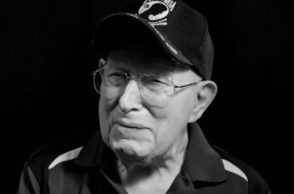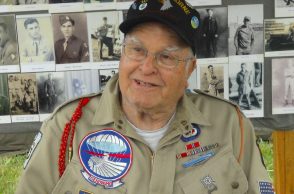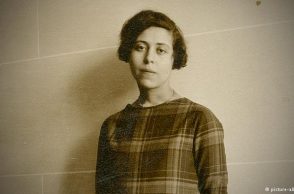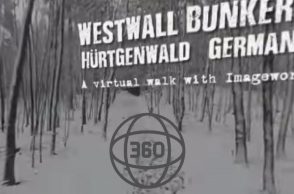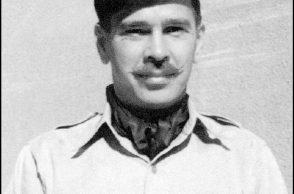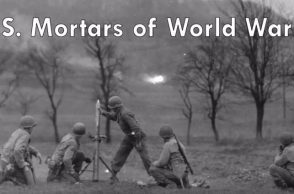On Saturday, December 6, 1941 some of the aircraft of the 47th Pursuit Squadron/15th Fighter Group were temporarily based at the auxiliary airfield near Haleiwa on the north shore of the island of Oahu in the Territory of Hawaii. Little more than a grassy strip between the Kamehameha Highway coastal road and the beach, Haleiwa field could not have been more primitive.
By Martin K.A. Morgan
It lacked hangars, landing lights and even a control tower. Despite the absence of proper airfield facilities, the 47th Pursuit Squadron was at Haleiwa to conduct gunnery qualification. In support of that training, the ground crews had fuel trucks and large quantities of ammunition on the field.

When Japanese aircraft attacked Oahu the following morning, several of the squadron’s pilots rushed to their aircraft at Haleiwa to take to the skies and fight the enemy. Two of those pilots, 2nd Lt. Kenneth M. Taylor and 2nd Lt. George S. Welch, boldly joined the battle and managed to shoot down enemy aircraft. Thus on the first day of World War II for the United States, Taylor and Welch faced unbelievable odds and fought back against the Japanese. Both young officers were ultimately awarded the Distinguished Service Cross for what they did on Sunday, December 7, 1941 .

The weapon that Taylor and Welch used that morning was one of the most legendary aircraft ever to fight for the United States – the mighty Curtiss P-40 Warhawk. Developed as an improvement over the P-36 Hawk, the P-40 offered greater speed and performance mainly because its Allison V-1710 V12 in-line engine gave it a more streamlined fuselage that reduced drag. In 1937, Germany adopted the Messerschmitt Bf-109 and Japan adopted the Mitsubishi A5M. When the P-40 first flew the following year, it promised to give the U.S. Army Air Corps the advantage of one of the world’s most advanced air superiority fighters. As political tensions in Europe and Asia worsened, it looked as if the United States would soon need the Warhawk.

Although the P-40 experienced its baptism to combat during vicious dogfights in the skies over Hawaii on Sunday, December 7, 1941, it faced the enemy again just 12 days later in the skies over China.
On the morning of December 20th, a group of ten Japanese Ki-48 Lily light bombers from the 21st Hikotai took-off from their base in Hanoi, Indochina and proceeded northwest toward the southern portion of China’s Yunnan Province. As the Ki-48s approached the city of Kunming two hours later, they were attacked by a group of fighters they had never seen before – fighters that carried the national insignia of China – fighters that had very distinctive shark’s teeth painted on their noses. For the next 30 minutes, these new fighters engaged the Japanese aircraft in a running battle, swooping in and out of their formation until only one bomber was left fleeing back toward Hanoi. One of the crewmembers on the lone Ki-48 that survived the encounter later described the attacking pilots as “extraordinarily brave.” The Japanese had just met the Flying Tigers for the very first time and they had just seen what the mighty P-40 Hawk could do. Among the most famous fighting units of the Second World War, the Flying Tigers were officially known as the 1 st American Volunteer Group – or the AVG. The group consisted of at first two and later three fighter squadrons with attached ground personnel. The AVG’s pilots were recruited from the ranks of the pre-war Army Air Corps, Marine Corps and Navy and they volunteered to help defend China from the forces of the Japanese empire.

To support the AVG, the US government sent 100 P-40Bs to China via the port of Rangoon, Burma during the spring of 1941.
The pilots and ground crew followed soon thereafter traveling on civilian passports. At first the group was based at a former British airfield near the ancient walled city of Toungoo on Burma’s Kittang River. There, they began preparing to face the enemy while their Warhawks were being reassembled, tested and readied for war. Ultimately, two of the group’s squadrons were based near Kunming and one was based at Mingaladon Airport near Rangoon. Once operational, the Flying Tigers began taking a heavy toll on the enemy in air combat over Burma and China. Between their first battle over Kunming on December 20, 1941 and their final battle over Hengyang on the 4th of July 1942, the group destroyed over 200 Japanese aircraft. Outnumbered in almost every engagement, the AVG lost many of the original delivery of 100 P-40Bs to operational accidents and action with the enemy. To replace those losses, the group received 50 P-40Es near the end of its combat tour. When the American Volunteer Group officially disbanded, it became the 23rd Fighter Group/XIVth U.S. Army Air Force but it kept the nickname Flying Tigers. With a long list of triumphs and a roster that included such notable individuals as Claire Chennault, Pappy Boyington, Tex Hill and Bob Scott, it only makes sense for the name to live on.

Although the P-40 became an icon of the American fighting spirit in World War II thanks to the epic exploits of the Flying Tigers, it did not just fight in the China-BurmaIndia theater. The Warhawk also fought in the Aleutian islands, New Guinea, the Solomon Islands, the Philippines, the Near East, North Africa and Italy. It even equipped U.S. allies like the French, the British and the Soviet Union (who called it the Tomahawk and/or Kittyhawk). Although the P-40 was a warrior on almost every fighting front of the Second World War, the Allison V-12 engine’s lack of a two-stage supercharger limited the aircraft’s high altitude performance. This placed the it at a disadvantage in comparison to some of Germany’s fighters and meant that the Warhawk could not compete in the fiercely competitive high-altitude combat environment in the skies over Northwest Europe. Nevertheless the P-40 remained the mainstay of Army fighters until 1943. It was even flown by the pilots of the 99th Fighter Squadron – the famed Tuskegee Airmen. When deliveries of the aircraft concluded in 1944, the Curtiss-Wright Corporation in Buffalo, New York had built 13,738 Warhawks at a maximum cost of $44,892 per airframe. When you consider that the P-40 held the line during a critical time in the war, that cost was quite a bargain.
